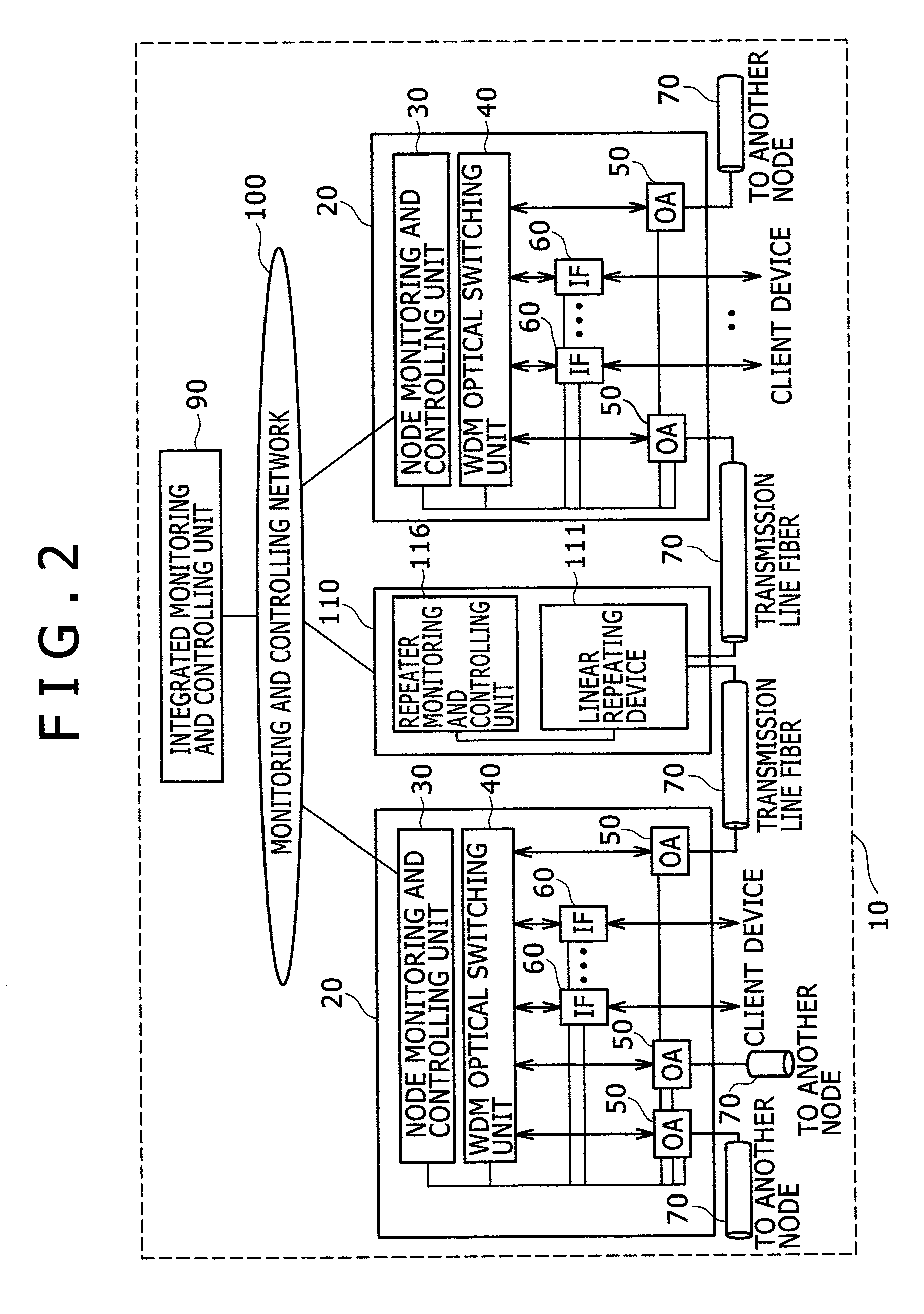Optical transmission system and optical node
a transmission system and optical node technology, applied in the field of optical transmission systems and optical nodes, can solve problems such as the complexity of the management of passes
- Summary
- Abstract
- Description
- Claims
- Application Information
AI Technical Summary
Benefits of technology
Problems solved by technology
Method used
Image
Examples
embodiment 1
[0016]Network forms will be described with reference to FIGS. 1A to 1C. FIG. 1A shows a configuration having two offices 20-A and 20-B at the terminal points and office 20-C between office 20-A and office 20-B, which are connected to one another by transmission line fibers. It is a linear-shaped network in which at least part of signals added at office 20-A or office 20-B can be dropped at office 20-C and other signals can be added at office 20-C. Solid lines here indicate that paths are set between office 20-A and office 20-B, between office 20-A and office 20-C, and between office 20-C and office 20-B.
[0017]FIG. 1B shows a ring-shaped network. In the ring-shaped network, office 20-A, office 20-B, office 20-C and office 20-D are connected to the respectively adjoining offices 20 by transmission line fibers. As the network constitutes a ring, even if a fiber runs into fault in one position, the network can be protected by transmission in the reverse way. Moreover, the network can be...
embodiment 2
[0025]Control of dropping and addition when a receiving node is to be added to the optical transmission system will be described with reference to FIG. 8 and FIG. 9. In FIG. 8, it is supposed that a one-to-N type optical path having office A as the transmitting node and offices B and C as the receiving nodes is set in the optical transmission system 10. The flow of signals in this state is represented by thick solid lines. The states of the drop function unit 140 and the add function unit 150 in the WDM optical switching unit 40 are stated in the “Before addition” line in FIG. 9. In FIG. 9, the drop function unit is expressed as “D” and the add function unit, as “A”. In the list, “D.C.” means irrelevant and “DITTO”, the same as above. As the add function unit, a 2×1 optical switch or WSS can be used, and this unit is functionally a selector. Referring back to FIG. 8, addition of office D as a receiving node to the one-to-N type optical path of the optical transmission system 10 will...
PUM
 Login to View More
Login to View More Abstract
Description
Claims
Application Information
 Login to View More
Login to View More - R&D
- Intellectual Property
- Life Sciences
- Materials
- Tech Scout
- Unparalleled Data Quality
- Higher Quality Content
- 60% Fewer Hallucinations
Browse by: Latest US Patents, China's latest patents, Technical Efficacy Thesaurus, Application Domain, Technology Topic, Popular Technical Reports.
© 2025 PatSnap. All rights reserved.Legal|Privacy policy|Modern Slavery Act Transparency Statement|Sitemap|About US| Contact US: help@patsnap.com



